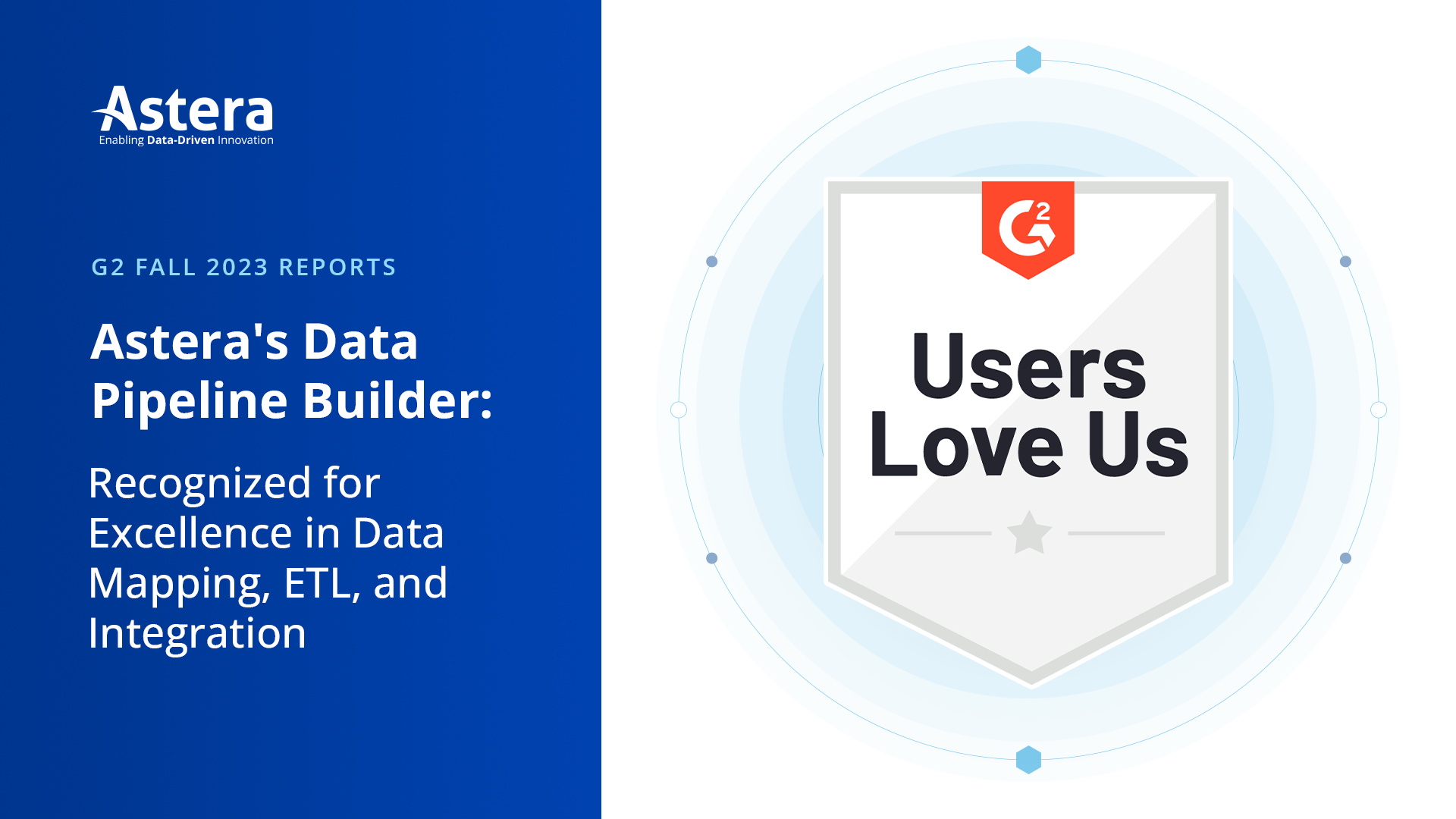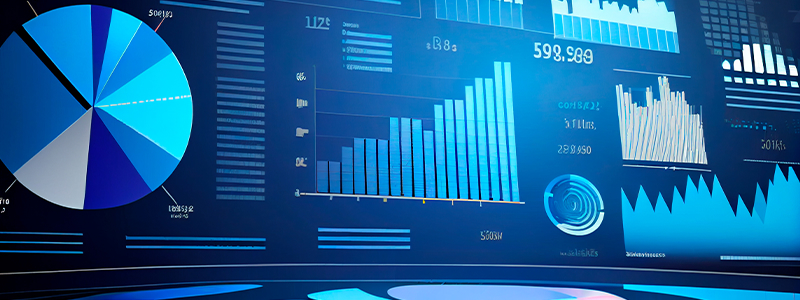
Top 9 Reverse ETL Tools and How to Choose The Right Tool for Your Organization
Modern data management relies heavily on ETL (extract, transform, load) procedures to help collect, process, and deliver data into an organization’s data warehouse. However, ETL is not the only technology that helps an enterprise leverage its data.
Reverse ETL does the opposite of the standard ETL process, moving the processed data from storage back into various business applications and tools. In doing so, Reverse ETL (or rETL) processes enable non-technical stakeholders to utilize formatted data for multiple purposes—including forecasting, operational decision-making, customer behavior analysis, and more.
All this is achieved with the help of Reverse ETL tools, and we’ll be discussing them in detail.
What is a Reverse ETL Tool?
Simply put, Reverse ETL lets you turn informative facts and figures into actionable steps, and various Reverse ETL tools are available to help you do so. All Reverse ETL tools serve the same primary purpose of transferring data from your storage solutions into downstream systems, so you will need to look carefully at other factors when choosing one for your enterprise.
Let’s take an in-depth look at Reverse ETL tools and highlight some of 2024’s best ones.
Types of Reverse ETL Tools
Note that data transfer—the core function of reverse ETL tools—can be achieved using different methods. Here are some ways you can do so:
Full-Fledged Reverse ETL Tools
Reverse ETL tools are purpose-built for transferring processed data from your data warehouse, lake, or other storage system to various business tools. They work with your existing data storage mechanism to push formatted data where it’s needed. You can consider this the purest form of reverse ETL since there are no workarounds or hacks involved.
Customer Data Platforms (CDPs)
A Customer Data Platform (CDP) ingests data from various sources and consolidates it into a persistent, unified database. Different business teams can access this centralized database easily and benefit from comprehensive customer profiles. CDPs are different from true Reverse ETL tools, yet they can function similarly when needed and send data to downstream locations based on activation requirements.
integration Platform as a Service (iPaaS)
An iPaaS tool serves as a data integration platform and is designed for easier point-to-point integrations. Using them with APIs, you can create workflows and trigger events to share data between systems. Just like CDPs, an iPaaS can offer the utility of a Reverse ETL tool without being one itself. It can serve as a Reverse ETL tool while having a different primary function.
The Best Reverse ETL Tools in 2024
These are the best Reverse ETL tools on the market in 2024:
1. Astera
Astera caters effectively to your Reverse ETL requirements using a no-code interface. It has a user-friendly design that you can quickly get comfortable with, regardless of your technical proficiency.
Key Features of Astera
- It offers customized data quality rules so you can get to your required data faster and remove irrelevant entries more easily.
- It makes it easy to maintain a log of all warnings and errors to identify potential issues.
- It supports all data formats and features an extensive library of connectors.
- Its cluster-based architecture distributes jobs across multiple nodes for faster completion.
- Considering cloud-first data management? Astera connects easily with cloud sources and destinations, such as Google BigQuery, Google Drive, Dropbox, Microsoft Azure, Amazon S3, Amazon Redshift, etc.

Simplify your ETL and Reverse ETL processes!
Astera Centerprise makes ETL and reverse ETL processes super easy using its drag-and-drop interface, cutting significant amounts of time and money investments – all while using zero code!
Try now – 14 days free!2. Matillion
Matillion is a cloud-native, GUI-based ETL pipeline tool. While it’s mainly used for data integration purposes and delivers ETL solutions, it also features limited Reverse ETL capability.
Key Features of Matillion
- The tool supports multiple data sources.
- It offers batch data loading and universal data connectors.
- Gives users a simple, code-free environment.
- Matillion’s Change Data Capture (CDC) processes enable rapid synchronization of data updates.
- Allows the automation of data pipeline creation and accelerates data delivery
3. Stitch
Stitch was originally a self-service cloud data integration solution and was acquired by Talend in 2018. While it operates primarily as a cloud-based ETL platform, Stitch also has Reverse ETL functionality.
Key Features of Stitch
- Supports numerous data warehouses such as Snowflake, Amazon RedShift, Google BigQuery, and Microsoft Azure Synapse Analytics, and data sources such as Shopify, MongoDB, and Salesforce.
- Offers ready-to-query schema and a simple interface.
- Provides enterprise-grade security integration for HIPAA and SOC 2 compliance.
- The tool offers open-source extensibility.
- It has orchestration features for scheduling, logging and monitoring, and error handling.
4. Airbyte
Airbyte is an open-source data integration platform focusing on ELT. The platform focuses heavily on community-building and open-source development.
Key Features of Airbyte
- Allows users to build connectors in different languages, in addition to the connectors built by its team.
- It offers support through GitHub, Slack, and forums.
- Features a low-code design and a user-friendly interface
- Implements standardized data transfer protocols.
- Airbyte offers built-in scheduling, orchestration, and monitoring.
5. Dataddo
Dataddo has not spent as long on the Reverse ETL scene as the other tools on this list, and is a no-code, fully managed data integration platform with Reverse ETL capabilities.
Key Features of Dataddo
- Dataddo offers support for Reverse ETL integration involving data lakes, data warehouses, SQL databases, and a variety of other sources.
- It provides multiple security measures for data protection.
- Features built-in data quality tools, such as the Data Quality Firewall, and error detection.
- Offers bi-directional data flows and compatibility between sources and destinations.
- Besides Reverse ETL, the tool also provides database replication and allows online services to be directly integrated with dashboarding applications.
6. Hevo Activate
Hevo Activate is one of Hevo Data’s two primary data integration products and is a dedicated Reverse ETL tool.
Key Features of Hevo Activate
- Features Automated Schema Management to ensure synchronicity between the destination schema and source datasets.
- Offers pre-load and post-load transformations.
- The tool enables quick integration into existing workflows using the Hevo API
- It provides ease of use and scalability.
7. Census
Census is a fully-managed, no-code Reverse ETL tool that has been in the industry since 2018.
Key Features of Census
- Census offers high-speed connectors and supports large-volume data transfer.
- Features incremental diffing for API rate management.
- Offers a simple UI, segment builder, and visual field mapper.
- The tool provides automated data quality measures, connector extensibility, detailed observability and logging, and programmatic sync management.
8. Hightouch
Hightouch is a scalable Reverse ETL tool that comes with various features for efficient data synchronization.
Key Features of Hightouch
- Offers effective management of Reverse ETL processes through granular permissions, SSO, and access control.
- Features a simple 3-step process for data activation with a secure, SOC 2 Type 2 compliant platform.
- Hightouch has a live debugging feature for easy identification of bad or irrelevant data.
- The tool offers observability, configurable alerts, and integration with tools such as Datadog, Datafold, and Monte Carlo.
9. Grouparoo
Grouparoo is an open-source, code-optional, partially managed Reverse ETL platform aimed primarily at developers.
Key Features of Grouparoo
- Grouparoo offers a permission system to meet security considerations.
- Features external tool compatibility for data quality procedures.
- Although mainly designed for developers, Grouparoo provides some functionality for non-technical users through its web UI.
- Allows users to schedule automated syncs.
How to Choose The Right Reverse ETL Tool in 2024

There are some critical factors to consider when picking a Reverse ETL tool for your organization. Here is what you should keep in mind:
1. Connector Selection
A Reverse ETL tool’s functionality depends on the quality and number of its connectors. The more connectors a tool has, the more sources and destinations it will be able to support. This is why the first thing you should do when looking for a Reverse ETL tool is to examine its connectors. Consider the following:
- Connector breadth: these are the features that are available for all connectors
- Connector depth: features that are specific to the connectors you require
- Prioritization: Connectors should work seamlessly with the business programs and tools that your organization uses today.
- Extensibility: If you require custom integrations for a particular workflow, connector extensibility can make the process easier, whether it’s through a custom API or Webhook connector.
Having a higher number of connectors means the Reverse ETL tool you choose is likelier to support your current data-related processes, while being scalable for future changes.
2. Rule-Based Pipeline Support
Creating conditions for your Reverse ETL pipelines gives you control over which datasets are processed and updated by your Reverse ETL tool. Instead of doing full syncs each time, which can be time-consuming and require more resources, rule-based pipelines can perform incremental syncs and only focus on the data specified in the sync rules.
This specificity can streamline your updates and make them faster, turning data into insights and making it available for you to use in less time.
3. Hybrid Data Management
Your preferred Reverse ETL tool should support hybrid integration. The ability to work with both on-premises and cloud-based applications leads to greater flexibility and scalability, which will prove useful as your organization evolves over time.
4. Event-Based Integrations
Event-driven architecture helps you ensure that your pipelines are updated in real-time. This is an essential feature because despite the effectiveness of scheduled updates, real-time integrations are more reliable for eliminating any gaps in your data, maintaining consistent data quality, and always having the most up-to-date data available.
5. Sync Reliability
What makes sync reliability so important is the peace of mind it offers. If your Reverse ETL tool prioritizes sync reliability and robustness, you can rest easy knowing that your data will be synchronized regardless of any technical difficulties or other issues that may arise.
Your Reverse ETL tool should automatically reattempt syncs in case of interruption or failure, seamlessly process any changes in your data models, and notify you if there are any problems. Additionally, data validation capabilities, automated and trigger-based sync scheduling, and high sync speeds are also vital considerations.
6. Security
Data privacy is a significant consideration, not just for compliance purposes but also because you have a duty to your customers to keep their information safe. Your Reverse ETL tool needs to complement your organization’s data security measures, not pose a challenge for regulatory and security compliance.
The Reverse ETL tool you choose should meet up-to-date safety standards, such as the Health Insurance Portability and Accountability Act (HIPAA) and the Payment Card Industry Data Security Standard (PCI-DSS). Also look for data protection measures such as encryption for optimum security.
7. Cost of The Tool
Evaluate the costs involved with using the tool. You will want to look at pricing models (not every tool comes with a conventional monthly plan) and determine whether the Reverse ETL tool you are interested in has a pricing model that works for you. Remember that the tool’s pricing not only needs to be feasible for right now, but it should also continue to be so as you scale your business.
8. Customer Support
Buying a tool is not the end-all-and-be-all of your Reverse ETL process. From setup and configuration to demonstration, tutorials, and eventual troubleshooting, you’ll be working closely with your vendor’s support teams for as long as you continue using the tool. As such, prompt and reliable customer support can go a long way in determining your overall experience with a product.
You need to be able to count on your vendor for quick responses, short turnaround times, and consistent availability so any issues that come up can be dealt with as soon as possible.
9. The Standalone vs. Unified Question
One significant consideration for organizations is whether to invest in a standalone Reverse ETL solution or a unified data integration platform that comes with Reverse ETL capabilities.
To make the right choice, first consider the volume of data that your organization is dealing with. If your workflows routinely involve large data volumes, then a unified data integration platform with built-in Reverse ETL functionality is a better option. The alternative to using a data integration platform is scripting or point-to-point data integration. While quick, these aren’t reliable in instances where there is a lot of data or a need for automation.
Having a unified data integration platform—complete with Reverse ETL capabilities—lets you get the most use out of your data without worrying about data quality, the coding effort required by your developers for scripting, or other concerns. Not only will you be able to obtain useful insights that much faster, but the other functions of the platform will help streamline all your data processes, too.
On the other hand, if your organization has smaller operations and its datasets aren’t extensive, then scripting can meet your basic integration requirements, and—once your data is integrated and formatted—a standalone Reverse ETL tool can move it from your data storage to your applications for downstream usage.
Note that this is only suitable if your datasets are small enough to be manually validated and changes in your data are infrequent enough not to require automated integration. If you plan to scale, operate in a dynamic environment, or just want to be better prepared for your evolving data needs, it’s better to invest in a unified data integration platform from the outset.

Why Astera is The Right Choice for Your Organization’s Reverse ETL Needs
Astera’s unified platform enables you to perform various data-related tasks and glean valuable insights using a single interface. Our zero-coding framework, paired with rapid onboarding, ensures you can quickly incorporate Astera into your workflow and benefit from personalized solutions for your use case with minimal downtime. The drag-and-drop interface makes it easy to create a dataflow and schedule it to run depending on your needs.
Astera’s comprehensive data management suite tackles various data-related challenges. With our range of modules, you can simplify your Reverse ETL processes, make sense of unstructured data, upgrade your data integration, build data warehouses, and improve your EDI and API management—all while using the same highly intuitive UI and experiencing consistent ease-of-use.
With an established presence in the data management sector and experience in the finance, retail, government, healthcare, and insurance industries, we can help you develop better Reverse ETL processes and enjoy hassle-free end-to-end data management.
Conclusion
Investing in the right Reverse ETL tool leads to better decision-making, increased operational efficiency, and the quick movement of enriched data to the required destinations.
Discover what Astera can do for you with a free 14-day trial or request a quote today to get started.
 Astera AI Agent Builder - First Look Coming Soon!
Astera AI Agent Builder - First Look Coming Soon!


